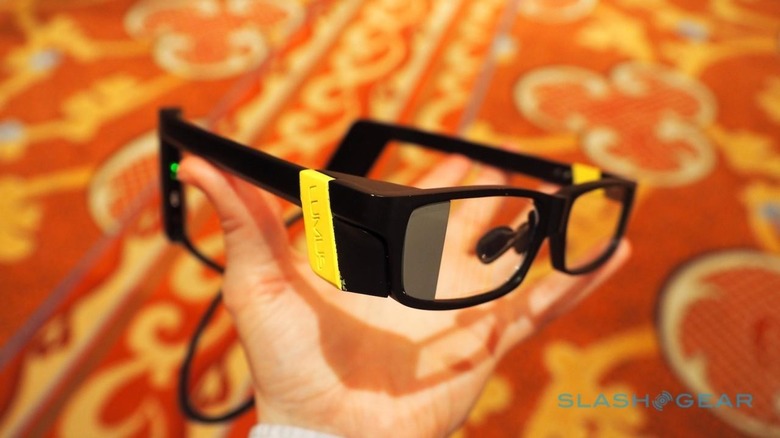Apple's Smart Glasses May Have Found Their Missing Key
Mass-production of digital lenses for augmented reality glasses has reignited rumors of Apple's smart glasses plans, with the company believed to be aiming for a 2019 or 2020 launch. Transparent display specialist Lumus has been showing its lenses for some years now, including integrating them into glasses-style wearables that can overlay digital information onto a view of the real world.
However, while Lumus has always pitched the idea of affordability, it's only now that it seems that's actually coming to fruition. The company has inked a deal with Quanta, Bloomberg reports, to have its lenses mass-produced. According to Lumus, it'll make them much cheaper and thus more practical for consumer devices.
"Quanta has suggested that full AR headsets would be priced for less than the cost of a high-end cell phone," Ari Grobman, chief executive officer at Lumus, said. "That's a big deal."
What's particularly interesting about the deal, however, is that it gives Quanta the option to produce the same components for the other companies it works with. The manufacturer and component supplier invested in the display specialist back in 2016, but is arguably best known as being one of Apple's largest manufacturing partners.

For instance, Quanta is responsible for manufacturing the Apple Watch, the Cupertino firm's existing wearable. Now, it's looking increasingly possible that it could also be making Apple's next generation wearable too, a headset with transparent displays that can surface digital information to the user while not blocking their view of the world around them, though nobody is confirming anything yet. All the same, it's part of what's expected to be a significant push into augmented reality and mixed reality by Apple.
The iPhone already supports AR in the form of ARKit, Apple's development toolkit for apps, but so far that content is only consumed on a smartphone display. The broader goal, it's believed, is to remove that device as an obstacle to greater immersion, not to mention leaving the user's hands free to interact with both the real and digital worlds. For that, you really need transparent displays.
It's those which Lumus has been focusing on. Started in 2000, the company produces waveguide display engines: effectively, the main components are built into a small housing that's positioned at the side of the lens, and which beams light onto a series of transparent refracting panes. Previous prototypes we've tried from the company have used either one or two such projection engines, giving either monocular or binocular digital overlays.
A single smart lens has the advantage of cutting bulk and power consumption; indeed, Lumus' DK-45 prototype could be mistaken – at first glance, at least – for a set of chunky fashionable eyeglasses. However, with a lens for each eye, Lumus can deliver 3D graphics for a more immersive experience.
Cost-effective mass production is only one issue Lumus – and any other transparent display manufacturer – faces, mind. The other is field of view (FOV), the amount of your vision that the display covers. In the case of the company's current products, that's 40-degrees at 1280 x 720 resolution.
Apple execs have been clear in recent months that there's no AR wearable coming any time soon. CEO Tim Cook, for instance, blamed the shortcomings of today's technology for that, arguing that any smart glasses Apple could launch today would probably be a disappointment. "Something that you would see out in the market any time soon would not be something that any of us would be satisfied with," he suggested.
However it's difficult not to see some of Apple's more recent announcements and technologies as leading up to AR devices. The TrueDepth camera array on the iPhone X, for instance, could just as easily track hand movement for interacting with a virtual interface as it does facial movement for Animojis, if mounted facing outward on a set of smart glasses. Meanwhile, the greater precision of motion sensors in more recent Apple Ax chipsets could be instrumental in delivering room-scale 6-degree-of-freedom (6DoF) tracking, pinpointing wearers in 3D space.
For now, the expectation is that it'll be 2019 at the earliest before we see the fruits of whatever Apple is working on with smart glasses. Even then, it could well be 2020 by the time a product hits the shelves. Although that means we have to wait, it does give developers plenty of time to create AR apps and experiences, meaning that the eventual smart glasses should already have some purpose by the time they finally do arrive in your nearest Apple Store.
